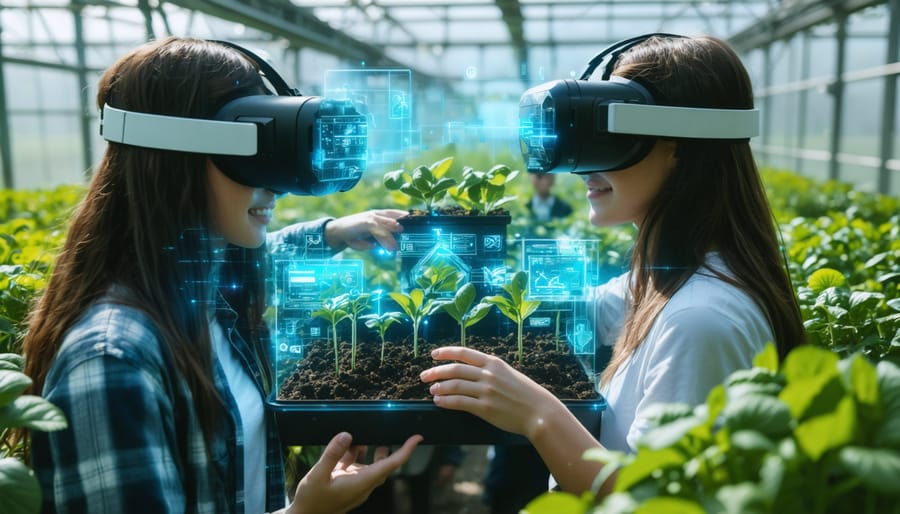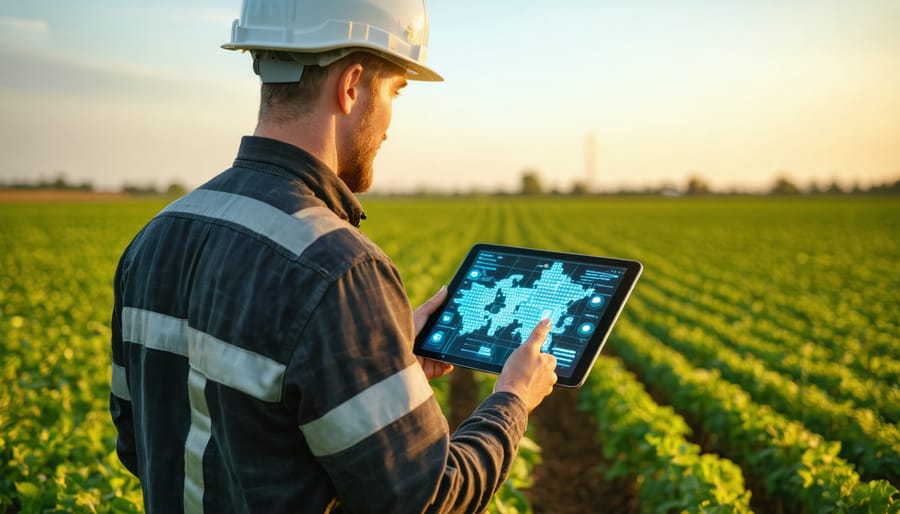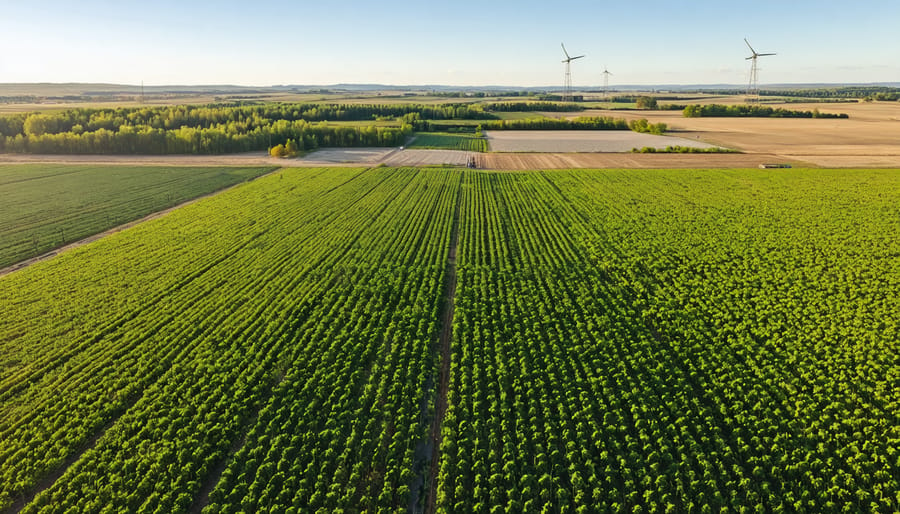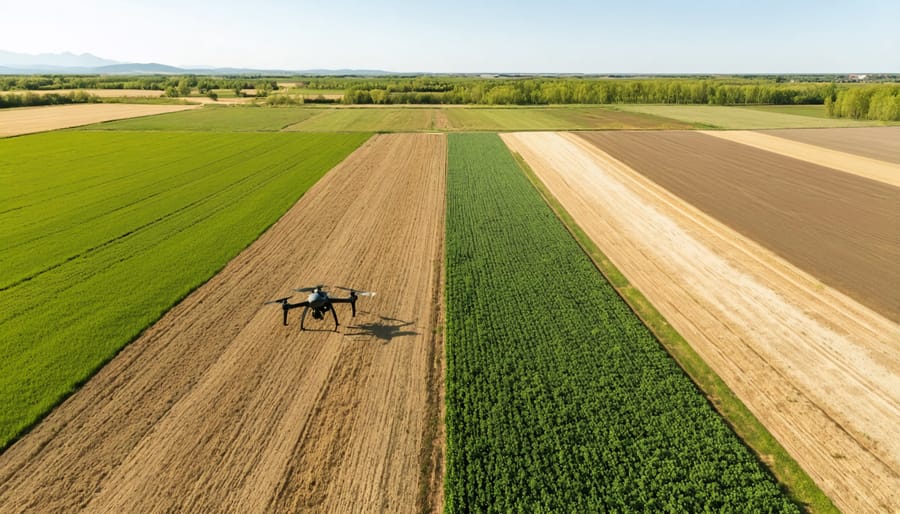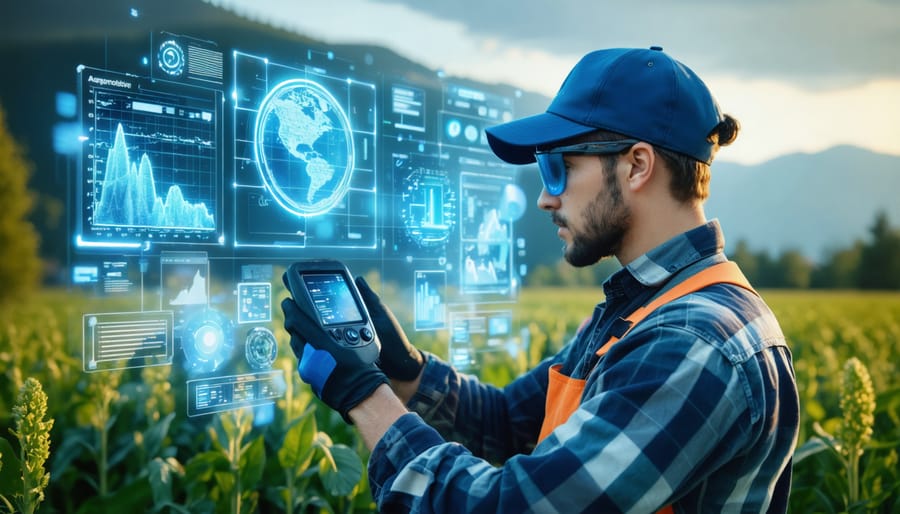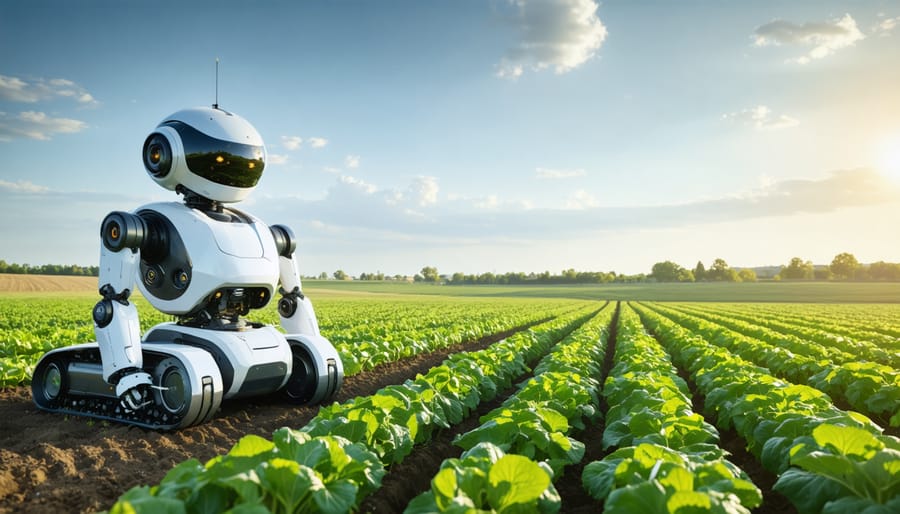Picture stepping into a greenhouse where students interact with floating 3D plant models, manipulate virtual soil samples, and instantly access crop data through their AR headsets. Augmented reality is transforming agricultural education across Alberta’s farming communities, bridging the gap between theoretical knowledge and hands-on experience.
At the University of Alberta’s Agricultural Innovation Hub, students now learn complex farming concepts through interactive AR simulations, reducing the learning curve for essential skills by 40% compared to traditional methods. This technology allows learners to visualize root systems, track plant growth in real-time, and practice equipment operation without risk to actual crops or machinery.
For seasoned farmers and agricultural professionals, AR provides immediate access to critical information during training sessions – from pest identification to optimal irrigation patterns – all overlaid directly onto their field of vision. The Prairie Agricultural Machinery Institute reports that AR-assisted training has improved knowledge retention by 75% while cutting training time in half.
This revolutionary approach to agricultural education isn’t just about flashy technology – it’s about creating more efficient, engaging, and practical learning experiences that prepare the next generation of Canadian farmers for the challenges of modern agriculture.
How AR is Revolutionizing Organic Farming Education
Real-time Soil Analysis Visualization
Augmented reality is revolutionizing how Prairie farmers understand and manage their soil health through intuitive visual overlays. By combining modern soil monitoring techniques with AR technology, farmers can now see real-time soil composition data directly in their field of vision.
Using AR-enabled smart glasses or tablets, farmers can walk their fields and instantly view colour-coded overlays showing nutrient levels, pH balance, and organic matter content. For instance, at the Morrison Family Farm near Red Deer, Alberta, farmers use AR visualization to identify areas requiring additional nitrogen, with red zones indicating deficiency and green showing optimal levels.
The technology translates complex soil data into easily digestible visual information, displaying everything from moisture content to microbial activity. Farmers can see how different soil layers interact and understand the movement of nutrients throughout their fields. This immediate feedback helps make informed decisions about fertilization, irrigation, and crop rotation.
What makes this particularly valuable for Canadian farmers is the ability to track seasonal changes. The system stores historical data, allowing users to visualize how soil conditions evolve throughout the growing season. By simply looking at a field through AR devices, farmers can see temporal patterns that might otherwise take years of experience to recognize.
For training purposes, experienced farmers can record their observations and soil management decisions, creating valuable educational resources for the next generation. These AR visualizations serve as powerful teaching tools at agricultural colleges across Alberta, helping students understand the complexities of soil science in a hands-on, interactive way.

Interactive Pest Management Training
Augmented reality has revolutionized how farmers learn and implement organic pest management strategies in their fields. Through AR-enabled mobile devices and smart glasses, farmers can now identify pests and beneficial insects in real-time, receiving instant visual overlays that highlight distinguishing features and provide control recommendations.
In Alberta, agricultural training programs have integrated AR technology to create immersive learning experiences. Farmers can scan their crops with AR-enabled devices to see virtual indicators of pest damage patterns, disease symptoms, and insect lifecycle stages. This hands-on approach allows learners to practice identification skills without risking crop damage.
The system works by matching real-time images against a comprehensive database of common agricultural pests in Canadian regions. When a match is found, the AR display shows key identification markers, potential damage patterns, and suggested biological control methods. For example, when scanning a canola field, the system might highlight cabbage seedpod weevil damage and suggest timing for beneficial nematode applications.
Training modules include interactive scenarios where farmers can practice decision-making in various pest pressure situations. The AR system provides immediate feedback on chosen management strategies, helping users understand the long-term implications of their choices on soil health and beneficial insect populations.
Local success stories include the Southern Alberta Institute of Technology’s pilot program, where new organic farmers reported 40% faster pest identification learning curves using AR training compared to traditional methods. The technology has proven particularly valuable during critical growing periods when quick, accurate pest identification is essential for maintaining crop health.

Practical Applications in Alberta Farms
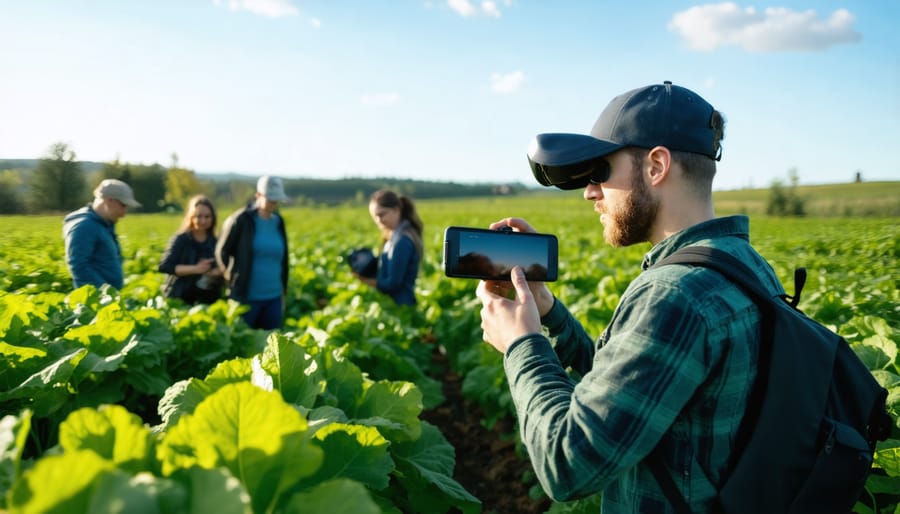
Success Story: Red Deer Valley Organic Farm
Red Deer Valley Organic Farm, located just outside of Sundre, Alberta, has become a pioneering example of the digital farming transformation through their innovative AR training program. In 2022, farm owners Sarah and Mike Thompson implemented an AR-based educational system to train new staff and seasonal workers in organic farming practices.
The system uses smartphone-compatible AR overlays to guide workers through essential tasks such as crop rotation planning, pest identification, and soil testing procedures. Trainees can point their devices at different areas of the farm to receive real-time information, visual guides, and interactive tutorials.
Within six months of implementation, the farm reported a 40% reduction in training time and a 25% improvement in task accuracy among new workers. Seasonal employees particularly benefited from the AR system’s ability to provide instant translations in multiple languages, making complex organic certification requirements more accessible to their diverse workforce.
The farm’s success has inspired neighboring operations to explore similar technology solutions. “What used to take us weeks to teach can now be learned in days,” says Sarah Thompson. “The visual nature of AR helps our team understand organic farming principles more intuitively, and the interactive elements keep them engaged throughout the learning process.”
Implementation Guide for Your Farm
Getting Started with AR Tools
Getting started with AR tools in agricultural education doesn’t require a complex technical background. Just like implementing digital farming tools, the basics are straightforward and accessible.
You’ll need a smartphone or tablet with a decent camera and enough storage space for AR apps. Most newer devices (within the last 3-4 years) will work well. Ensure you have a reliable internet connection in your training area, which can be achieved through Wi-Fi or mobile data.
Start with free agricultural AR apps available on the App Store or Google Play. Popular options include PlantSnap for plant identification and Farm AR for equipment training. Download these apps and practice using them in a controlled environment before introducing them to your training program.
For best results, create a dedicated learning space with good lighting and clear pathways. Consider weather protection for devices if you’re planning outdoor sessions, which is especially important during Alberta’s varying weather conditions. Remember to check device battery levels and have portable chargers ready for extended training sessions.
As we’ve explored throughout this article, augmented reality is revolutionizing organic farming education across Alberta and beyond. The technology offers unprecedented opportunities for hands-on learning without the risks associated with real-world trial and error. From virtual crop disease identification to interactive soil management simulations, AR provides our farming community with powerful tools to enhance their knowledge and skills.
The future of AR in agricultural education looks particularly promising for Canadian farmers. As technology becomes more accessible and affordable, we can expect to see more localized training programs incorporating AR solutions. These developments will be especially valuable for new farmers entering the industry and experienced producers looking to transition to organic methods.
The benefits are clear: reduced learning curves, better retention of information, and the ability to practice complex techniques in a safe, controlled environment. With continued support from agricultural institutions and growing adoption among farming educators, AR is set to become an integral part of sustainable farming education.
By embracing these innovative teaching tools today, we’re investing in the future of Canadian organic agriculture and ensuring our farming communities remain at the forefront of sustainable practices.

